The second edition of the Audio Branding Congress was held in Hamburg at the conference rooms of the Dialog im Dunkeln, an amazing exhibition located in the old warehouse district called Speicherstadt. As for the last year the congress was organized by the Audio Branding Academy, an indipendent institution founded in 2009 by Cornelius Ringe, Kai Bronner and Rainer Hirt, with the aim to promote the connection between sound and brand communication.
The title of this edition was Driven by Sound and the main topics were two: the relationship between multisensory design & brand experience and the sound of the electric cars in the future.
I and Sara were invited to present Sound for Electric Vehicles, the work we are conducting in Lorelei for the FIAMM Group, the italian company leader in the market of horns and acoustic devices.
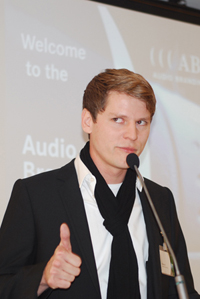
The congress was opened by Rainer Hirt, who showed a great satisfaction for the goals reached this year, with more than 150 participants and a lot of contributions coming from european countries, USA and also Brazil. Rainer’s prelude made us realize that the Audio Branding Congress was not only an event for sound professionals, but a real occasion in which people coming from different fields of communication had the opportunity to exchange ideas and opinions in a friendly and relaxed situation. And this is what really happened.
Rainer also introduced Karsten Kilian, from the Institute of Marketing of the University of St.Gallen, who was the moderator of all the oral sessions held in the green foyer of the conference. Just let me spend some words on Karsten: he was a great conductor, able to lead the discussion and manage the speakers and the audience during all the debates.
The first session of the day was Sound design: how understanding the brain of the consumer can enhance auditory and multisensory product / brand development, held by prof. Charles Spence, Head of the Crossmodal Research Laboratory from the Department of Experimental Psychology of the University of Oxford, who touched the issues of multi sensory experience in a product context. Spence described and discussed the results coming from some test sessions conducted on real consumers, to prove how much sound can affect the way a product is perceived and then how cognitive neuroscience has been influenced by the discipline of sound design.
The second session was Audi Corporate Sound, an interesting work on brand communication presented by Margarita Bochmann, project manager for Corporate Sound at AUDI AG. I have to admit that the start of the session was a little bit confusing, because of a first attempt to involve the audience in the presentation. Anyway the work of AUDI was impressing: the sound design team created a well defined audio branding strategy, a sort of sound framework, in order to use specified and customized sounds for all the activities related to AUDI AG. Bochmann showed the well-known video Audio Sound Studio (you can watch it below) and described all the fields of application of the guidelines. After the presentation an interesting Q&A time with the audience put in evidence how much for projects like these is important to define metrics for estimating the return of investment and to run testing sessions with groups of consumers to have some feedback on the work.
Then it was the time of the presentation Audio Branding Barometer, a work conducted by the Audio Branding Academy in september 2010 about the state of the sound branding industry. For the results of this interesting work I obviously prefer to link the page in which it’s possible to download an updated pdf version of the presentation.
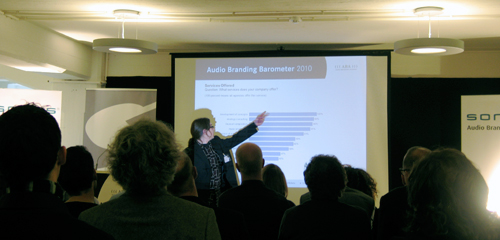
After a coffee break it was the time for the afternoon sessions, a series of parallel interventions dedicated to different themes.
Unimed-Rio Case Study was the case study presented by Zanna Sound, a sound branding agency from Rio de Janeiro, Brazil. The founder Zanna used a video presentation (you can watch it below) to describe all the stages which brought to the creation of a complete audio branding solution for the customer, highlighting the importance of defining a precise methodology to create a sonic project for a brand. At the end Zanna anticipated a new project called Vida Sonora, a tv series dedicated to the world of sound, with a carioca attitude which made us all feel closer the warmth of the great Brazil.
The issue of the communication between customers and sound professionals to define a brand identity was discussed by Cornelius Stiegler, from the Berlin University of the Arts, with the presentation Sound Communication – Towards a new understanding of briefing communication in the sound branding process.
According to Stiegler sound communication must be precise, efficient and comprehensible. To describe sounds we can use metaphors, sources and judgments, but in this case language is a very limited tool. Stiegler studied communication theory while conducting empirical analysis with some german professionals to propose some interesting concepts, like the synchronization of understanding between the customer and the audio branding agency, in order to reach for the same semantic meaning thanks to an iterative process which reminded me a lot the guidelines of information architecture and agile programming.
Stiegler described how much important for the agency is to create a sort of sonic brand fiction story together with the customer and then defining brand sound concepts using the intended effects and not on musical parameters. I hope we can see more results from this work in the future, because it was very interesting.
Then it came our time: I, Sara and Jorge Seco (R&D director for the Business unit Horns of the FIAMM Group), presented the work Sound for Electric Vehicles, in which we talked about the current state of the project, the steps already developed and a vision of the future goals.
We described the two main objectives of the work: to design audio content for providing external sonic cues for pedestrians and finally to design the prototype of a device to control and diffuse these contents on a electric vehicle. Lorelei developed a specific process of work for the issue of electric cars, which consisted of three main stages: a preliminary study to define the concept of a novel sonic solution, a phase of sound design for the creation of the sounds assets, and a final stage in which the solution is applied using the software simulators developed by the agency and the hardware devices prototyped together with the customer.
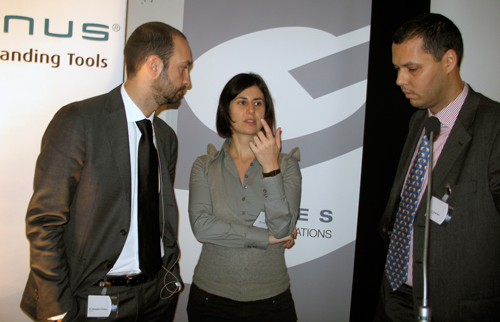
The last session was What Will the Car of the Future Sound Like?, a panel on the issue of the dangerously silent cars moderated again by Kilian with the following partecipants: Fabian Evert (BMW, Germany), Charles Spence (University of Oxford, UK), Jorge Seco (FIAMM, Italy), Markus Bodden (Product Sound, Germany) and our Sara Lenzi (Lorelei, Italy). In the audience we recognized Julian Treasure, Karsten Kjems from Sonic Branding and Ruth Simmons from Soundlounge.
The discussion was very interesting and touched a lot of diverse aspects related to social, economical and technical aspects, and at the end all the partecipants were fully aware that the debate on sounds for electric vehicles is still at the beginning and represents one of the most important challenge for the sound design and audio branding industry so far.
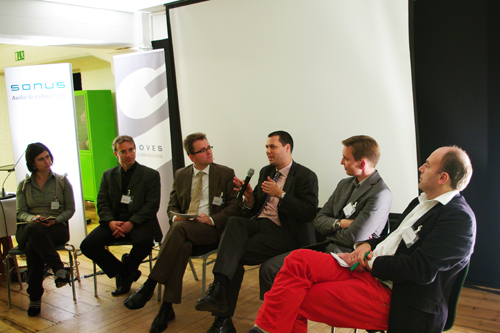
Due to the fact that afternoon sessions were held at the same time I didn’t succeed following some interesting presentations, like: Sound Design for New Products: Interactions with Technical Functionalities and Branding by Prof. Torsten Teicherta and Daniel Wagenführer (University of Hamburg, Germany), A case study of the development and implementation of a Sound Identity for DATEV eG by Claus Fesel (DATEV eG) and John Groves (Groves Sound Branding) and CNN International Rebrand by Alex Moulton (Expansion Team).
Anyway all the works presented during the congress will be documented in the Audio Branding Academy Yearbook 2010/2011 that the academy is going to release in the next months (if you are interested in the works of the last year you can buy the yearbook 2009/2010).
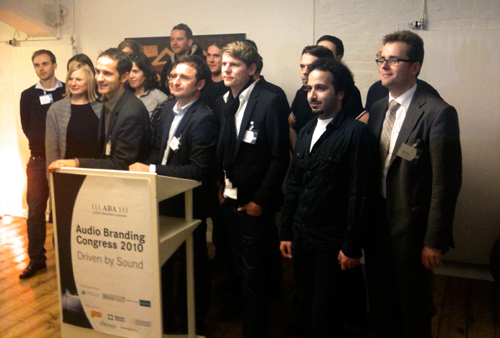
At the end we would like to thank Kai, Rainer and Cornelius who gave us this wonderful opportunity to present our work and know all the amazing professionals we met and knew during the congress. We hope we can see you again next year. Best.
- These two women will save the future of Sound Art with a web radio called Radio Papesse - June 20, 2016
- #SayItWithSound Contest: Sonify your World and Win - December 21, 2015
- Sound Technician at University of Greenwich - December 1, 2015



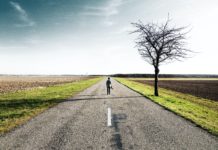

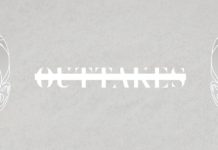
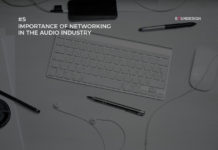
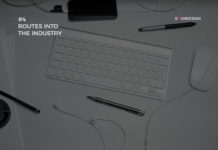
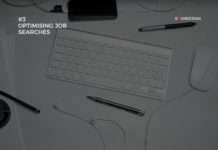
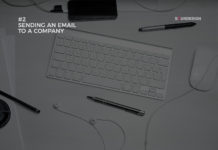
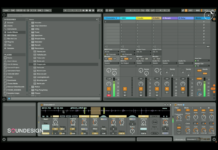
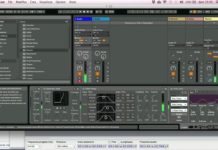

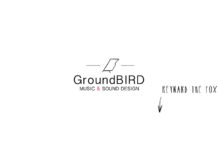
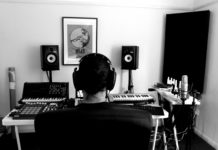
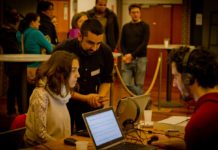

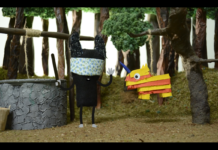
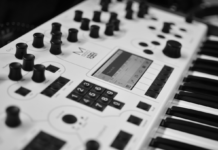

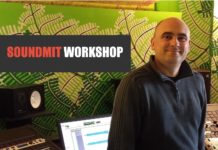
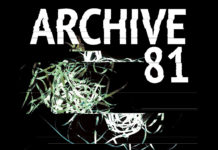
[…] Audio Branding Congress 2010 report | sounDesign […]
[…] can read the full report from the congress on sounDesign! « Previous Post Next Post […]
Volevo semplicemente dire che ho visto, ascoltato e letto il report e l’ho trovato interessante e curioso.
Buon lavoro!
Federica Falancia
ciao Federica, grazie per il commento, spero tu ci possa seguire nelle nostre prossime evoluzioni:)
[…] Audio Branding Congress 2010 report […]
[…] Audio Branding Congress 2010 report […]